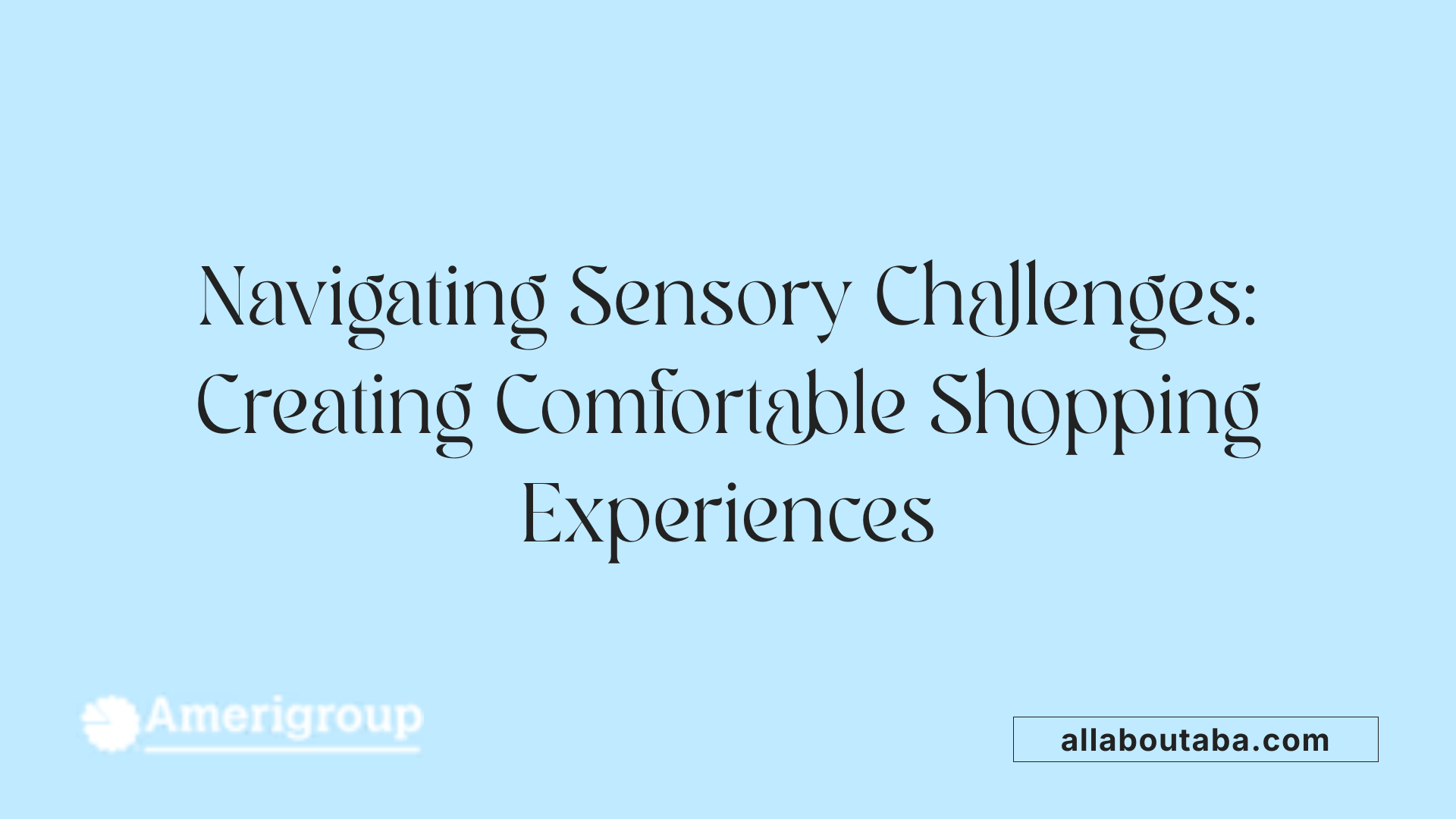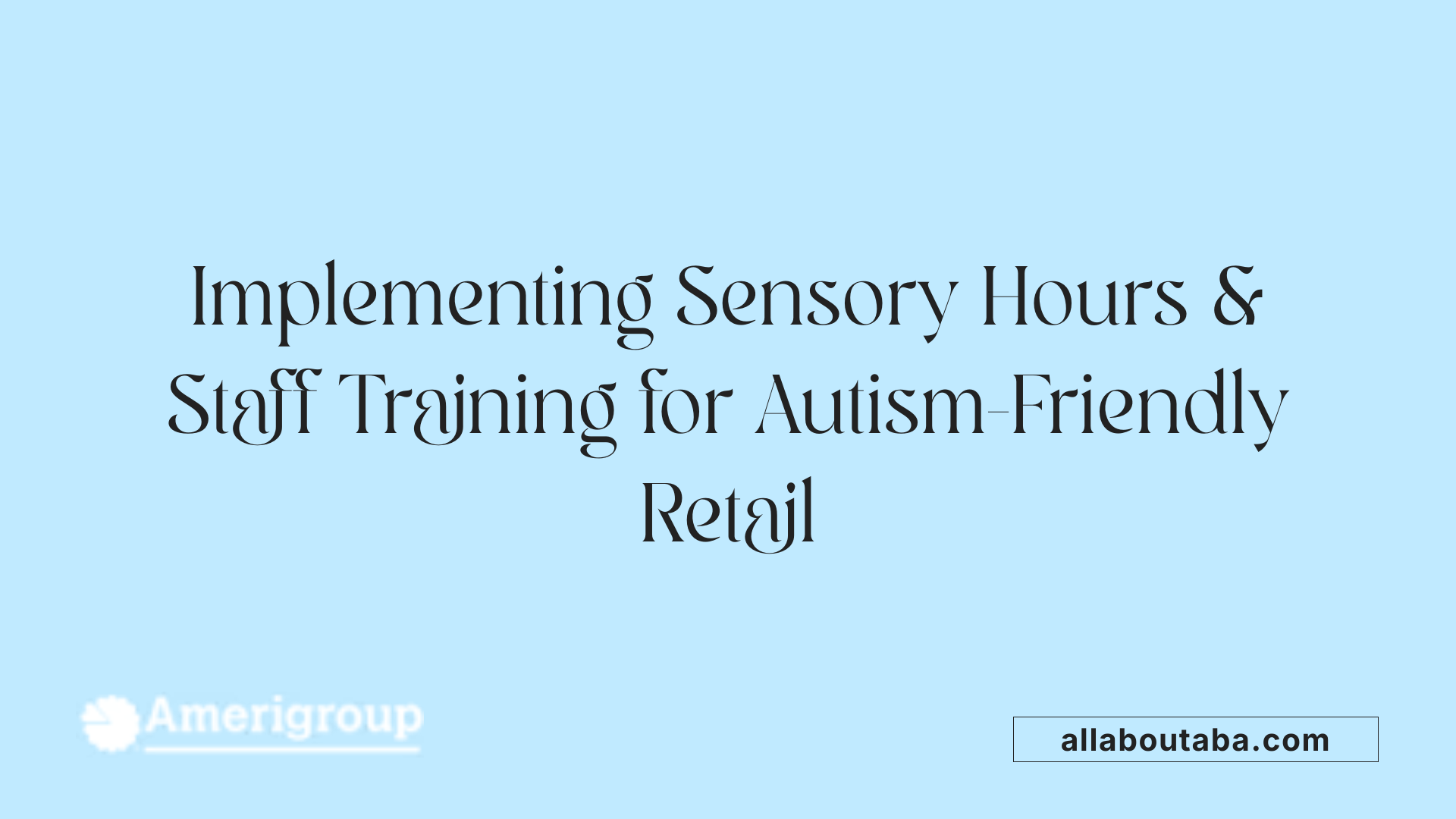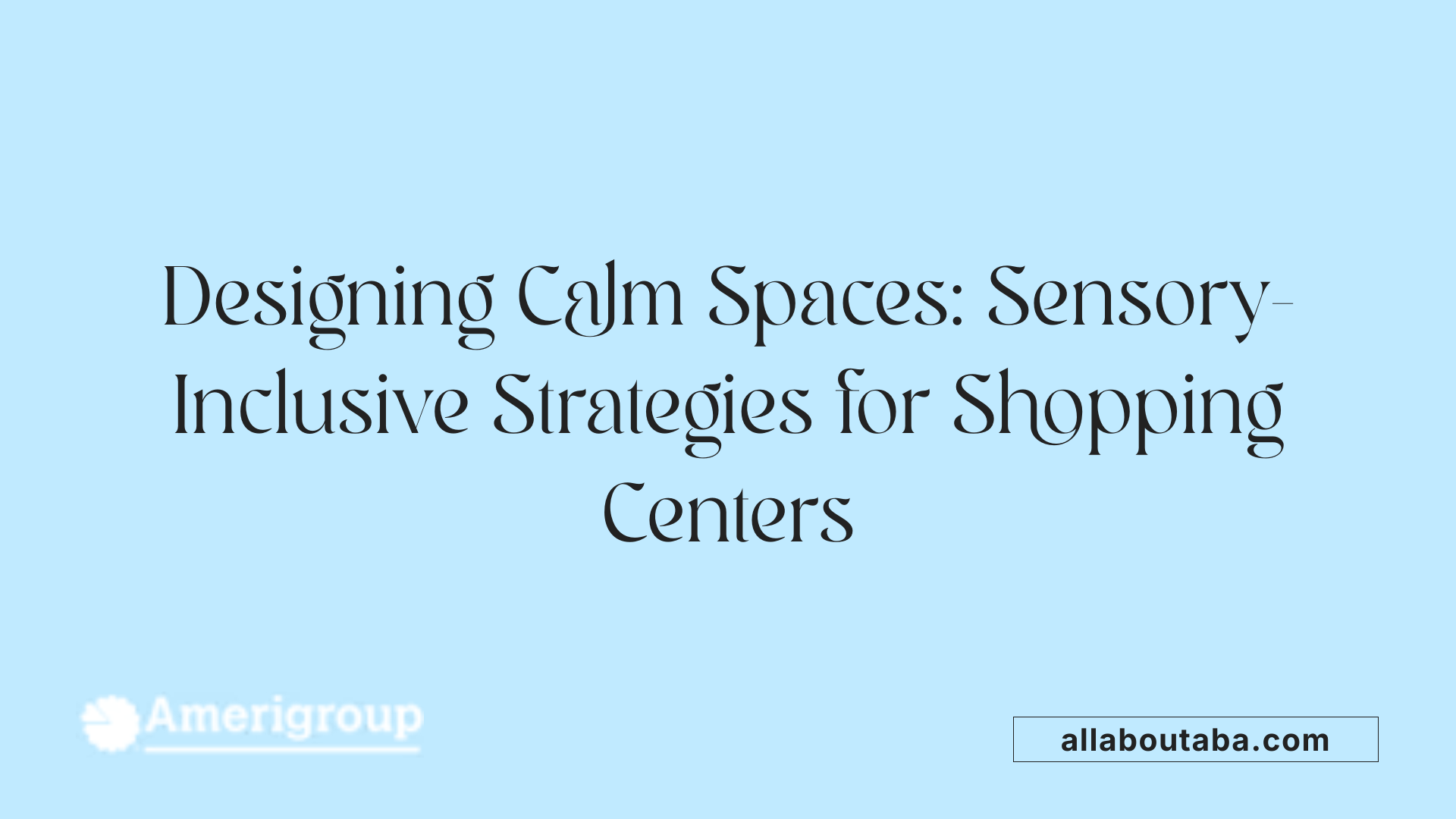Shaping Better Shopping Experiences for Autism Inclusion
Shopping centers often present sensory and social challenges for autistic individuals and their families. To foster inclusivity, awareness and implementation of autism-friendly design and operational practices are crucial. This article explores effective strategies and expert-backed approaches to transform retail environments into welcoming spaces for people on the autism spectrum.
Understanding Autism and Sensory Challenges in Retail

What sensory differences do autistic individuals experience in shopping environments?
Many autistic people experience sensory differences that affect how they perceive their surroundings. These can include hypersensitivity (over-sensitivity) or hyposensitivity (under-sensitivity) to stimuli such as bright lighting, loud noises, strong smells, and crowded or busy areas. Such sensory inputs may quickly become overwhelming, leading to sensory overload. For example, fluorescent lights can be harsh, background music intrusive, and bustling crowds stressful within retail spaces.
Challenges faced by autistic individuals in shopping centers
The sensory overload caused by typical shopping environments often results in increased anxiety and stress for autistic shoppers. These environments commonly feature loud announcements, bright lights, unpredictable sounds, and visual clutter, all of which can be distressing. Additionally, navigating large or unfamiliar store layouts can cause disorientation. Communication barriers and misunderstandings with staff or other shoppers add further challenges. Consequently, many autistic people or their families may avoid stores to prevent distress or uncomfortable encounters.
Why do autistic individuals prefer predictable environments?
Predictability and routine provide comfort for many autistic individuals. Clear and consistent environments reduce anxiety by minimizing unexpected surprises. When shopping spaces have predictable layouts, visual supports like maps and signage, and routines such as scheduled quiet shopping hours, autistic shoppers feel safer and more at ease. Visual schedules and social stories can also prepare individuals for what to expect, contributing to a more positive shopping experience.
Simple accommodations like dimmed lighting, reduced noise levels, and designated quiet zones support sensory sensitivities. These modifications foster inclusivity and allow autistic individuals greater independence and enjoyment when shopping.
| Aspect | Description | Impact on Autistic Individuals |
|---|---|---|
| Sensory Sensitivities | Hypersensitivity or hyposensitivity to light, sound, smell, crowding | Can cause distress or sensory overload |
| Common Environmental Triggers | Bright lights, loud noises, crowded stores, visual clutter | Lead to anxiety and difficulty navigating |
| Predictable Environment | Routine, clear signage, quiet hours, visual supports | Reduces anxiety, enhances comfort |
| Supportive Adjustments | Dimmed lights, lowered noise, quiet zones, social stories | Improves access and enjoyment of shopping environment |
Principles of Sensory-Inclusive Design in Shopping Centers

How Do Universal Design Principles Help Create Inclusive Shopping Environments?
Universal design principles aim to create environments usable by everyone, regardless of age or disability. This approach ensures spaces are accessible and welcoming to diverse users, including autistic individuals. By integrating features like wider aisles, adaptable lighting, and tactile guidance, shopping centers promote inclusivity and social inclusion, making visits more comfortable and stress-free.
What Environmental Modifications Support Sensory Needs?
Environmental adjustments play a critical role in reducing sensory overload. Key modifications include:
- Lighting: Adjustable and dimmed lighting minimizes visual overstimulation.
- Sound: Noise reduction through soundproofing and controlled music volumes helps lower auditory stress.
- Colors and Textures: Using neutral colors and calm finishes reduces sensory distraction.
- Quiet Zones: Designated areas offer respite for those needing to regulate sensory input.
These changes help create calming atmospheres that enhance comfort for autistic shoppers.
What Is Sensory Zoning and Why Is It Important?
Sensory zoning categorizes areas of a shopping center by different levels of sensory stimuli. Zones vary from low-stimulation quiet areas to more active spaces, allowing visitors to choose environments that suit their comfort levels. This approach supports diverse sensory needs, enabling individuals to manage their sensory experience effectively throughout their visit.
How Does Wayfinding and Signage Enhance Accessibility?
Clear and high-contrast signage, tactile pathways, and maps aid navigation, essential for predictability and independence. Visual guides, social stories, and wayfinding markers reduce anxiety by creating a predictable and easy-to-follow layout. Incorporating sensory maps also helps autistic individuals prepare their visit, avoiding overwhelming stimuli.
By combining universal design with thoughtful environmental modifications, sensory zoning, and effective wayfinding, shopping centers can significantly improve accessibility and comfort for autistic customers and others with sensory sensitivities.
Creating Autism-Friendly Operational Practices: Sensory Hours and Staff Training

What Are Sensory-Friendly Shopping Hours?
Sensory-friendly shopping hours are specially designated times when retailers adjust the store environment to reduce sensory stimuli. During these periods, lights are dimmed, background music and announcements are lowered or paused, and the store is less crowded. Major retailers like Walmart, Target, New Seasons Market, and Primark offer these quiet sessions to create calming environments that support autistic individuals and others with sensory sensitivities.
How Is Staff Training on Autism Implemented?
Staff training is essential for providing compassionate and effective support to autistic customers. Training programs cover autism awareness, communication strategies, and the use of assistive technologies. Organizations such as BeyondAutism offer bespoke training tailored to retail settings. Well-trained staff can recognize sensory challenges and offer personalized assistance, such as guiding customers, adjusting the shopping experience, or providing explanations about store layouts.
How Are Autism-Friendly Events Organized?
Retailers host autism-friendly events like sensory hours or relaxed performances by adjusting environmental factors including lighting and noise. These events often involve staff trained specifically in autism awareness and sensitivity to ensure positive, inclusive experiences. They may also provide sensory toolkits, visual schedules, or designated quiet zones, fostering a welcoming atmosphere for autistic customers and their families.
What Supportive In-Store Adjustments Are Made?
In addition to sensory hours, stores implement ongoing changes to accommodate sensory needs. These include dimming lights, minimizing noise, reducing visual clutter, and establishing quiet areas within the store where customers can retreat if overwhelmed. Visual aids such as maps, signage, and social stories help make navigation predictable and reduce anxiety. Packaging sensory toolkits containing items like ear defenders and sunglasses is another common strategy to support visitors during their shopping experience.
These operational practices combined support a more inclusive, accessible retail environment that respects and accommodates the sensory needs of autistic people.
Applied Behavior Analysis (ABA) Therapy and Its Role in Supporting Autistic Shoppers

What is Applied Behavior Analysis (ABA) therapy, and how is it used to support individuals with autism?
Applied Behavior Analysis (ABA) therapy is a science-driven approach used to assist individuals with autism spectrum disorder (ASD). This therapy focuses on encouraging beneficial behaviors through methods like positive reinforcement and structured teaching. ABA helps develop essential skills such as communication, social interaction, daily living tasks, and behavior management.
What are the typical goals of ABA therapy for individuals with autism?
ABA therapy aims to enhance meaningful social behaviors—like improving communication and social skills—while reducing behaviors that may cause difficulties. It also helps build adaptive functioning skills, promoting greater independence and improving the individual's quality of life.
Who provides ABA therapy, and what qualifications should these professionals have?
Professionals delivering ABA therapy are highly trained and certified. These include Board Certified Behavior Analysts (BCBAs) who create personalized therapy plans and Registered Behavior Technicians (RBTs) who carry out the interventions under supervision. Their credentials and continual training ensure ethical and effective support.
How is the effectiveness of ABA therapy measured in individuals with autism?
Therapy progress is monitored by collecting data on observable behaviors. Through measurable metrics and visual data trends, therapists regularly review how well the intervention works. This ongoing analysis allows modifications to improve therapy outcomes.
What role do families play in the success of ABA therapy for individuals with autism?
Families are vital partners in ABA therapy. They work closely with therapists, reinforce skills learned during sessions at home, and help generalize those skills across different settings. Training and open communication with families significantly boost the therapy’s effectiveness and support nurturing environments for autistic individuals.
Environmental and Spatial Design Features to Support Autism-Friendly Shopping

How Do Dimmed Lighting and Noise Reduction Enhance Autism-Friendly Retail Environments?
Reducing sensory overload is crucial for many autistic individuals who are hypersensitive to bright lights and loud sounds. Retailers achieve this by dimming the lighting and lowering noise levels during sensory-friendly hours. This approach minimizes discomfort and creates a calmer atmosphere, helping shoppers feel more at ease. Lowered music volumes, reduced announcements, and sound-absorbing materials contribute significantly to this sensory regulation.
Why Are Quiet Zones and Escape Spaces Important in Shopping Centers?
Designating quiet areas within stores or shopping centers provides autistic individuals with safe spaces to retreat to when overwhelmed. These zones typically feature soft lighting, no music, calming colors, and comfortable seating. Escape spaces also support sensory regulation, allowing shoppers to recharge and continue their visit with reduced anxiety. The inclusion of these spaces is supported by research and is an essential element of autism-friendly design.
How Do Sensory Maps and Clear Wayfinding Support Predictability?
Clear signage, tactile guidance, and sensory maps help autistic shoppers navigate unfamiliar retail spaces more confidently. These tools promote predictability by illustrating routes, highlighting quieter areas, and indicating entrances and exits. Social stories and orderly spatial sequencing used alongside these maps reduce anxiety and encourage independence during shopping trips.
What Role Do Natural Elements Play in Creating Calming Environments?
Incorporating natural features such as greenery and water elements within or around shopping centers delivers calming sensory input. These natural components are known to reduce stress and enhance overall well-being. Integrating them into sensory zones not only benefits autistic individuals but also creates a more pleasant environment for all visitors.
These environmental adaptations—combining dimmed lighting, noise control, dedicated quiet spaces, clear wayfinding, and nature integration—compose an inclusive spatial design strategy. This approach enhances comfort and accessibility, encouraging more positive, stress-reduced shopping experiences for autistic customers.
Engaging Autistic Individuals and Caregivers in Participatory Design

Why Involve Autistic Individuals and Caregivers in Retail Design?
Involving autistic individuals and their caregivers in design decisions helps ensure that retail environments truly meet their sensory and accessibility needs. By drawing on firsthand experiences, stores can create spaces that reduce sensory overload and improve comfort. Participatory design fosters environments that are not only functional but also welcoming and empowering for autistic customers.
Use of Checklists and Standards to Guide Improvements
Retailers benefit from using autism-friendly assessment tools, such as tailored checklists, to evaluate and improve their services. These checklists often incorporate expert recommendations and feedback from autistic users, providing practical steps towards creating more inclusive environments. Continuous use of such tools supports ongoing improvements and accountability.
The ASPECTSS Framework: A Design Guide
Developed by Magda Mostafa, PhD, the ASPECTSS framework is a comprehensive tool for creating sensory-friendly environments for autistic individuals. It focuses on seven elements: Acoustics, Spatial sequencing, Escape spaces, Compartmentalization, Transition zones, Sensory zoning, and Safety. This approach guides designers in addressing sensory and spatial needs, making retail spaces calmer and easier to navigate.
Recognition and Awards Encourage Best Practices
Programs like the Autism Friendly Award incentivize businesses to adopt high standards of autism-inclusive practice. These recognitions highlight retailers that excel in sensory adjustments, staff training, and overall accommodation, encouraging wider adoption across the industry. Such awards also help autistic shoppers identify supportive environments.
Through active collaboration, standardized assessment, structured design frameworks, and recognition programs, retailers can develop truly inclusive experiences that support autistic individuals and their families.
Benefits of Inclusive Retail Environments: Social and Economic Impact

How Do Inclusive Retail Environments Improve Customer Loyalty?
Retailers who implement inclusive design features such as sensory-friendly hours, quiet zones, and staff trained in autism awareness create welcoming shopping experiences. This attentiveness fosters repeat visits and builds trust. Customers with sensory sensitivities feel valued and supported, which enhances brand loyalty and encourages positive word-of-mouth.
In What Ways Do Inclusive Retail Spaces Enhance Social Inclusion?
Inclusive retail environments promote participation by accommodating different sensory and accessibility needs. Features like clear signage, sensory maps, and designated quiet areas enable autistic individuals and others with disabilities to shop independently. This supports their autonomy and reduces anxiety, promoting social inclusion and reducing feelings of isolation in public spaces.
What Are the Legal Accessibility Requirements for Retailers?
Retailers must comply with laws mandating accessible design—ramps, wider aisles, tactile signage, and audible alerts. Many regions now encourage or require sensory accommodations too, acknowledging disabilities beyond mobility. Compliance not only prevents legal issues but demonstrates corporate responsibility toward disability rights and equal access.
How Do Accessible and Sensory-Friendly Stores Foster Equitable Communities?
By creating environments that consider diverse needs, stores contribute to broader equity. Sensory-friendly shopping hours and environmental modifications reduce barriers for autistic customers and others with sensory processing challenges. This inclusivity supports fairness in access to goods and services while raising awareness and empathy within the community.
The social and economic advantages of autism-friendly retail extend beyond individual benefits, nurturing loyal customers, enhancing community belonging, and meeting legal obligations. These changes also position retailers as leaders in accessibility and inclusivity, making shopping a more comfortable and respectful experience for everyone.
Towards a More Inclusive Shopping Future
Developing autism-friendly shopping centers requires a holistic approach incorporating sensory-friendly design, staff training, supportive operational practices, and collaboration with autistic individuals and families. Applied Behavior Analysis therapy complements these efforts by enhancing skills needed for positive shopping experiences. By adopting universal and sensory-inclusive principles, retail spaces can reduce sensory overload, increase accessibility, and foster dignity and independence. These practices not only benefit autistic shoppers but also enrich the broader community, leading to greater social inclusion and economic opportunity. As awareness and implementation grow, shopping centers can become models of compassion, understanding, and belonging for all customers.
References
- Sensory Friendly Shopping
- Sensory Inclusivity in Retail Environments: A Design- ...
- Accessible environments
- Creating Autism Friendly Spaces
- Sensory Design Towards the Built Environment for Autism
- retail store
- 5 ways to make a retail store more autism-friendly
- Applied Behavior Analysis (ABA)
- Applied Behavior Analysis (ABA)







